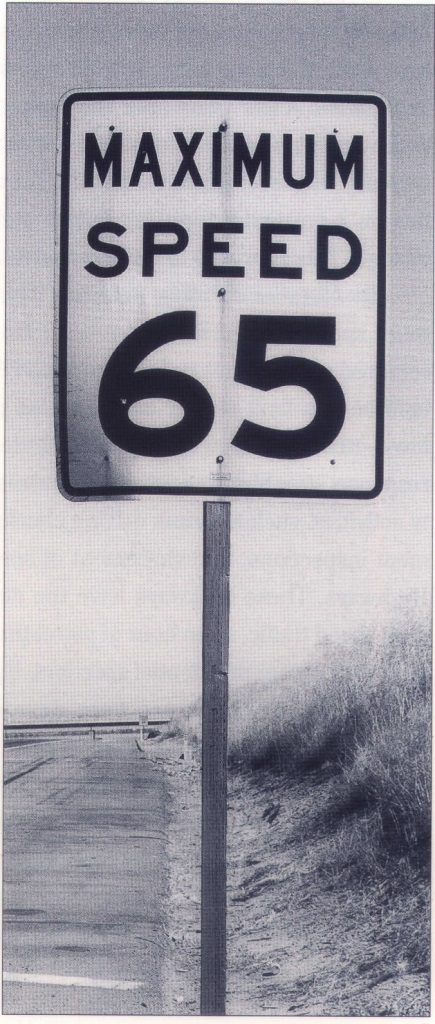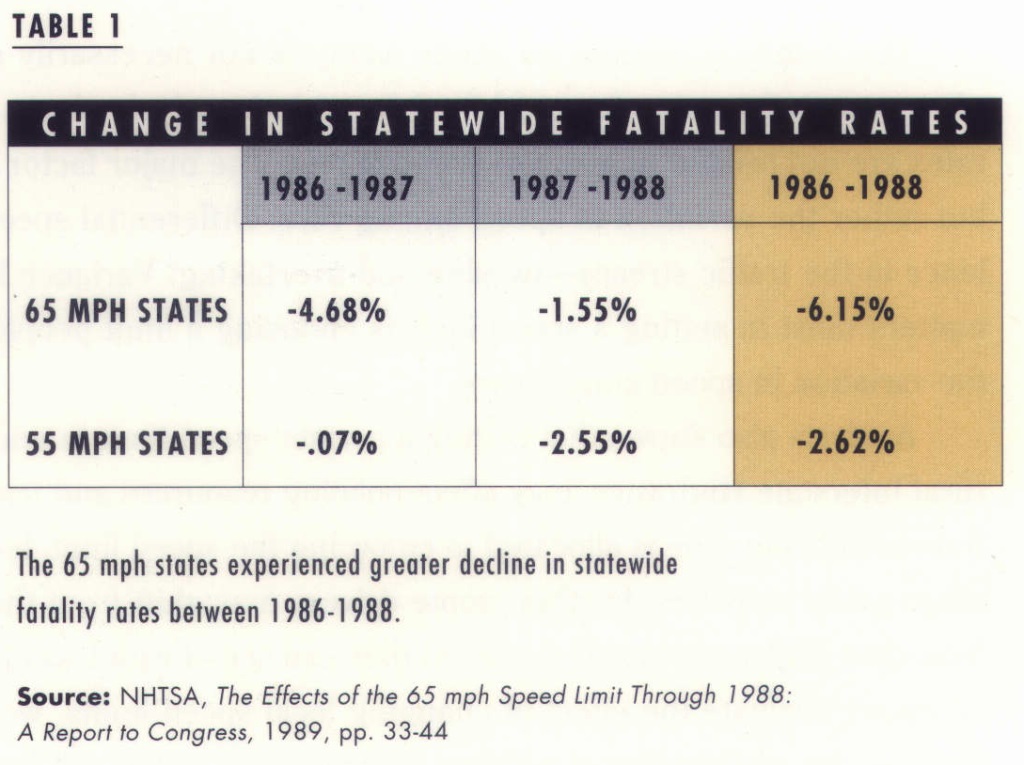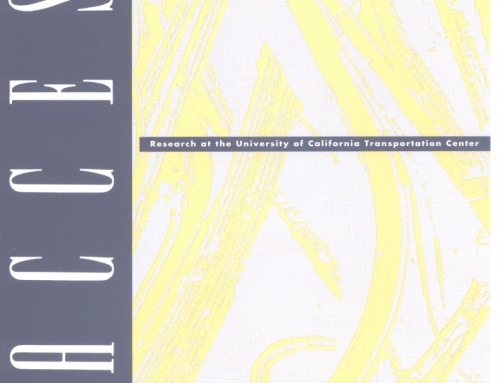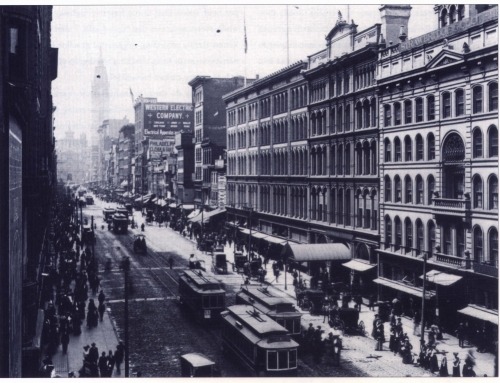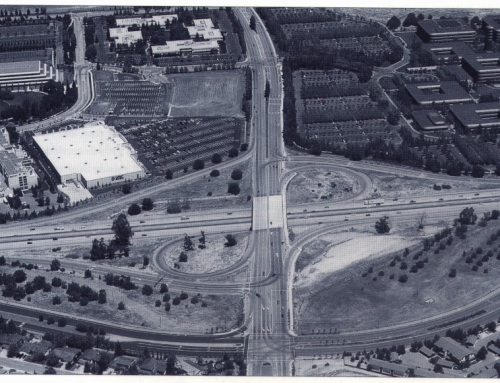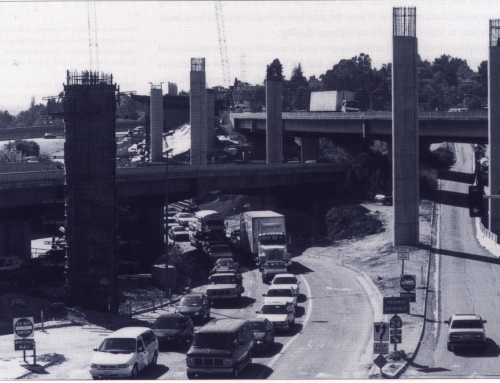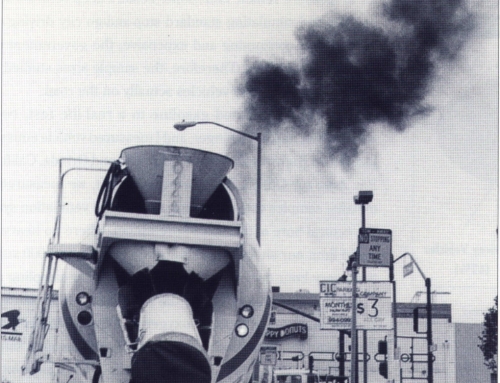[sharelines]States should set their own speed limits.
Congress may soon pass a law that allows states to set their own speed limit. What might happen if state choose to raise these? We don’t need to guess. We can examine what happened when states were allowed to raise certain speed limits in 1987. The result: Higher speed limits caused and overall gain in safety.
Background: A New Perspective
The common wisdom on traffic safety is not necessarily correct. Consider the often-repeated maxim, “speed kills.” Empirical analysis shows that highway fatality rates are not related to average speed levels. The major factor is not average speed, but rather the variation in speed among cars. Differential speeds cause more turbulence in the traffic stream- passing and overtaking. Variance kills, not speed. What matters most in setting a speed limit is choosing a limit people will obey, to reduce the variation in speed among cars.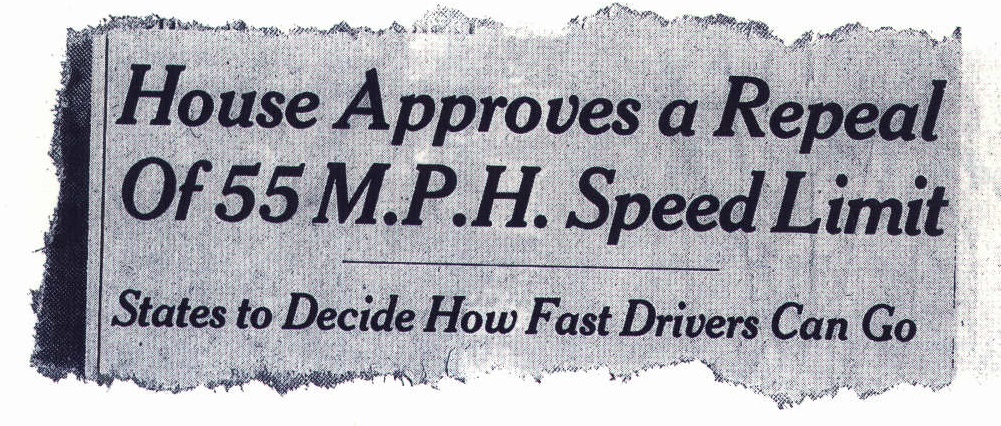
Analysis also shows that setting a certain speed limit in one location, such as the rural Interstate Highways, may affect policing resources and traffic in other locations. If more policing time is allocated to enforcing the speed limit, less time is available for other safety activities. Further, some drivers may shift from the now heavily policed Interstate Highways to side roads, so they can speed with less chance of being caught. When we evaluate the effect of changing local speed limits, we must cast a wide net because the reallocation of policing activities and traffic will have systemwide consequences, not just local ones.
I studied data from a natural experiment to compare the analytic power of the resource allocation perspective against conventional analysis. The analysis found that an increase to 65 mph actually produced a decline in highway fatalities.
The Experiment
In 1987, the federal government allowed states to raise speed limits on rural Interstate Highways; forty states did so. Safety analysts warned that the increase to 65 mph would cause an increase in fatalities. A few years after the higher limit was established, some analysts presented studies showing that fatalities did increase. However these studies look at only local effects: fatalities on a particular highway before and after the speed limit change. This approach ignores resource allocation.
The Allocation of Policing Resources The 55 mph national maximum speed limit resulted from a 1974 federal mandate that required states to: (1) reduce the speed limit to 55 mph; and (2) enforce this limit strictly and keep the proportion of speeders low-otherwise states would lose federal highway funds. In response, state highway patrols shifted resources from other safety activities, such as drunk driving checkpoints and truck equipment inspections, to enforcement of speed limits on Interstate Highways. These highways have the densest concentration of high speed traffic, so an hour of patrol-time there will control the greatest number of potential speeders. By 1983, twenty-nine percent of patrol staff hours were devoted to rural Interstate Highways, although these were already the safest highways in the state, producing only 9 percent of fatalities.
Highway patrol chiefs considered this a peculiar way to allocate manpower. Testifying before Congress in 1990, Elmer Tippet of the International Association of Chiefs of Police said: “[Federal financial sanctions] force the over-concentration of limited resources for the express purpose of attaining compliance rather than application of resources in a manner most effectively enhancing total highway safety … ” Following the rise of the legal speed limit to 65 mph, highway patrols were allowed to shift their patrol resources.
The Allocation of Highway Resources Because of their physical design, the Interstates are our safest roads, and parallel side roads generally our most dangerous. Higher legal speeds on the Interstates would be expected to lure traffic away from the side roads, hence reducing fatalities on them. Is there evidence that traffic did shift to the Interstates following the 65 mph limit? We need to measure change relative to some expected baseline Traffic on the rural Interstate Highways in the 65 mph states grew 1.73 times faster than did their overall VMT (vehicle miles traveled). Traffic on the non-Interstate Highways grew at only eighty-nine percent of the overall VMT growth. Further, VMT on rural Interstate Highways grew 1.62 times faster in the 65 mph states than it did in the 55 mph states. These findings support the reallocation theory.
Misallocated Resources Make A Difference
Did the reallocation of traffic and highway patrol resources matter? Did it affect fatalities?
A Simple Test To answer this question, I aggregated the states into two groups – those that raised the speed limit to 65 mph, and those that did not – then computed their respective fatality rates. The difference in fatality rates between the two groups of states indicates that the 65 mph experiment reduced the fatality rate by 3.62 percent.1
Table 1 shows the results. In states that raised speed limits, the overall fatality rate fell by 4.68 percent in 1987 (compared to the year before when the limit had been 55 mph), then fell an additional
1.55 percent in 1988. In the states that did not change their speed limits, fatality rates were essentially unchanged in 1987 compared to the year before, and then fell by 2.55 percent the next year.
State by State Analysis The results in Table 1 are clear, but do not control for the possibility that important differences may exist between the states that raised speed limits and those that did not.
Thus we have to disaggregate the data and explicitly deal with the determinants of the fatality rate in individual states.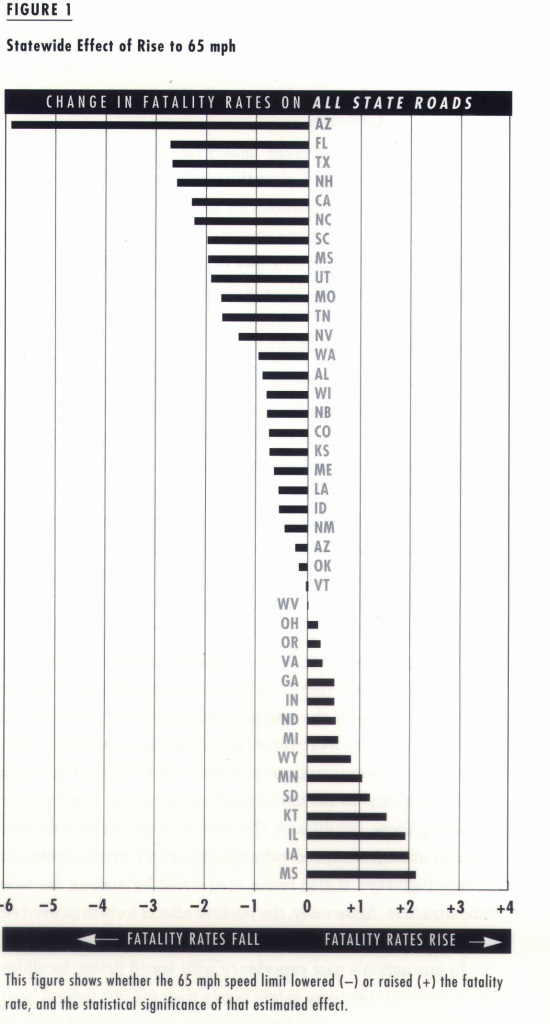
A 1990 state-by-state model by Garber and Graham was the most sophisticated existing analysis of the effects of the 65 mph limit. They estimated the number of fatalities per month on rural Interstate Highways, running separate analyses for each state that adopted the 65 mph limit. They accounted for the following factors:
- the 65 mph speed limit;
- the unemployment rate for each state (economic conditions strongly influence both the amount and type of driving) ;
- whether states have a mandatory-use seat belt law;
- trends in roads, cars, traffic, or population;
- monthly seasonal effects; and
- the number of weekend nights in each month (more drinking occurs on weekends, and drinking is highly associated with accidents).
If the higher speed limit were to reduce safety, accidents would rise when the speed limit is raised to 65 mph. Garber/Graham concluded, “The new 65 mph limit appears to be increasing rural Interstate fatalities in some states, reducing them in others, and having no detectable effect (given the experience to date) in the remainder. The number of states experiencing increased fatalities exceeds the number experiencing reduced fatalities … “Their analysis is thorough and ingenious, but they studied only the effects of the speed limit change on local roads. In contrast, the resource allocation perspective predicts there will also be systemwide effects.
Thus I reestimated the Garber/Graham model to focus on the statewide fatality rate instead of considering only rural Interstate fatalities. In all other respects, the models are identical. Most of the results for the forty states confirm the Garber/Graham findings: for example, increased unemployment and seat belt laws both decrease the fatality rate.
But the statewide average fatality rate declined by 3.43 percent after the limit was raised to 65 mph. Figure 1 plots the results from the state analysis. Each bar in Figure 1 shows the change in fatalities for one state. If the bar points to the right, fatalities increased after the speed limit was raised; if it points to the left, they declined. The longer the bar, the greater the significance of the estimate. Figure 1 shows the statewide effects of the higher speed limit: Most of the bars point to the left.
Summary And Conclusions
Prior evaluation of the new 65 mph speed limits measured only the local effects of the change. I measured the systemwide effects, and found that statewide fatality rates fell by 3.4 to 5.1 percent in the group of states that adopted the 65 mph limit.
It appears that patrol resources and traffic had been misallocated prior to the 65 mph limit. What could have caused this? Consider the history of the 55 mph National Maximum Speed Limit. It was enacted to conserve gasoline after the 1973 OPEC oil embargo. Its conservation effect proved 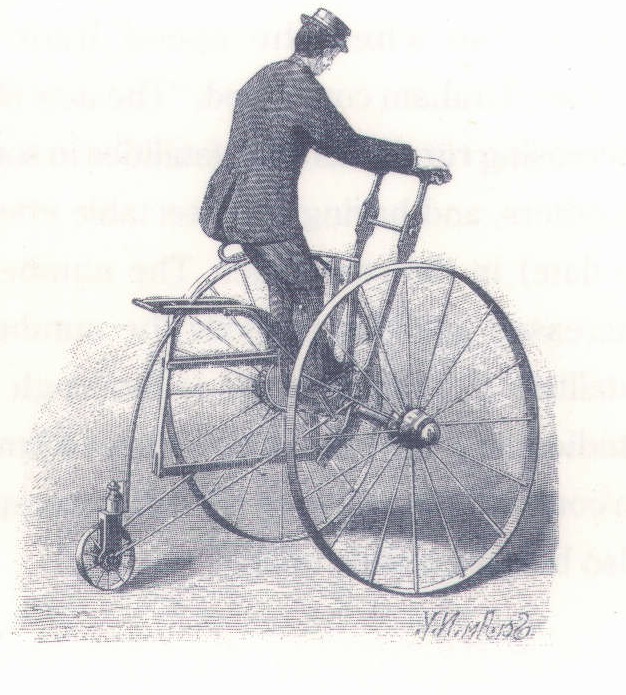 trivial, but there was a drop in highway fatalities in the following years. The causes of that fatality drop are difficult to identify: the deep post-OPEC economic recession produced a substantial decline in travel, hence a drop in fatalities. Patriotic compliance with the new speed limit produced a substantial decline in speed variance, hence a drop in collisions. There may also have been some effect from the lower speed itself, but subsequent empirical work has failed to find it.
trivial, but there was a drop in highway fatalities in the following years. The causes of that fatality drop are difficult to identify: the deep post-OPEC economic recession produced a substantial decline in travel, hence a drop in fatalities. Patriotic compliance with the new speed limit produced a substantial decline in speed variance, hence a drop in collisions. There may also have been some effect from the lower speed itself, but subsequent empirical work has failed to find it.
Whatever caused the original safety effect had, however, lost its force by the mid- 1980s. Drivers were increasingly avoiding the speed limit: Radar detectors became a new industry; drivers sought alternative routes; and the highway patrols found it increasingly burdensome to allocate enough manpower to control speeding.
Given these conditions, the new 65 mph speed limit freed highway patrols to shift resources from speed enforcement on the Interstates to other safety activities and to other highways. It also reallocated traffic by making the safer Interstate Highways more attractive. Apparently, the positive effects from improved resource allocation were more than enough to offset any negative effects of higher speed.
In our nation’s past experience with speed limits, localities have demonstrated a better sense of their own safety needs than did our federal lawmakers. I expect a similar outcome if Congress eliminates the national speed limit, allowing states to determine their own.
Further Readings
Garber and J. Graham, “The Effects of the New 65 Mile-per-Hour Speed Limit on Rural Highway Fatalities: A State-by-State Analysis,” Accident Analysis and Prevention, Vol. 22, 1990, pp. 137-149.
Charles Lave and Patrick Elias, “Did the 65 mph Speed Save Lives?,” Accident Analysis and Prevention, Vol. 26, No. 1, 1994, pp. 49- 62. UCTC No. 69.
Charles Lave, “Speeding, Coordination, and the 55 MPH Limit,” American Economic Review, Vol. 75, 1985, pp. 1159-1164.
National Highway Traffic Safety Administration, The Effects of the 65 mph Speed Limit Through 1988: A Report to Congress (Washington, DC: U.S. Department of Transportation, 1989).
National Research Council of the National Academy of Sciences, 55: A Decade of Experience (Washington, DC: 1984).
Tippet, Eimer, Testimony before the Subcommittee on Public Works and Surface Transportation of the U.S. House of Representatives, April 24, 1990.

